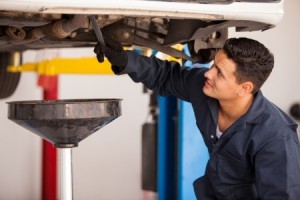Are you planning for a road trip in Reno? Have you taken the necessary steps to reduce the probability of an unexpected auto breakdown? Let’s take a look at tips to help you prepare for your road trip adventure.
According to an article at womansday.com, “Auto Maintenance Tips Before a Road Trip”
 “In general, the most critical areas to check before going on a driving trip are engine fluids, radiator hoses, belts, tires and brakes. Adequately preparing these key areas of the automobile before you leave for your trip will not only keep you safe while driving, it’ll also help prevent costly repairs—and no one wants to spend money fixing their car during a vacation.
“In general, the most critical areas to check before going on a driving trip are engine fluids, radiator hoses, belts, tires and brakes. Adequately preparing these key areas of the automobile before you leave for your trip will not only keep you safe while driving, it’ll also help prevent costly repairs—and no one wants to spend money fixing their car during a vacation.
1. Engine Oil
Check your oil levels and the date you’re due for an oil change. If you’re close to the manufacturer-recommended oil-change interval listed in your manual (you do read your manual, don’t you?), then go ahead and change it. Be sure to use the correct grade of high-quality name-brand motor oils to protect the life of your engine while also maintaining optimum fuel economy to help save you money in fuel costs. Visit MotorOilMatters.org to learn more about the right oil for your road trip driving conditions and find out why you always need to use high-quality motor oils.
2. Transmission and Differential Fluids
Did you forget about the other fluid reservoirs in your car? Both your transmission and drive axle have their own lubricant supply. Check your owner’s manual for their change intervals. They are usually quite a bit longer than those for engine oil, but if your car has over 75,000 miles and you’ve never checked or changed these other lubricants, it’s time to get busy.
Note: A regular oil-change shop can handle the greasy job of changing and refilling fluids when you take your car in for oil changes.
3. Hoses
Look for bulges or blisters in hoses, which indicate a weakness in the wall. If your hoses have cracks or blisters, replace them. It’s easier to do it now than in the 112-degree heat of Death Valley. As a precaution, buy a hose-patch kit at the local auto parts store to keep in the glove compartment.
4. Belts
Check belts by turning them sideways with your hand so you can see the friction surface. If they’re even the slightest bit ragged, torn, cracked or showing the fiber cords, it’s time for fresh ones. Consult your service manual for instructions or turn the task over to a trusted mechanic. Just in case, carry an extra set of belts along as inexpensive insurance.
5. Engine Coolant
New vehicles come equipped with engine coolant designed to go 100,000 to 150,000 miles. If your car is less than four years old, just check that the under-hood coolant reservoir—usually a clear plastic bottle that says “engine coolant” on the cap—is topped off. Not all coolants are the same and it’s not a good idea to mix them, so be sure to use the same coolant type that is already in the engine. Consult your owner’s manual for the correct type.
6. Tire Pressure and Tread
Low tire pressure can decrease fuel economy, but more important, may cause the tire to run hotter from the extra friction, leading to a blowout. Most people believe the appropriate tire pressure is listed on the tire itself. But actually, the number on the tire is the maximum amount of pressure the tire can hold. Look on your driver’s side door, in the glove compartment or on the fuel filler door for the recommended tire pressure. Before you hit the road, be sure to check the pressure in all four tires using a good gauge (available from your auto parts store). If it is too low, an air hose is usually available at most gas stations. It’s also important to look at the tread on all four tires to make sure they’re not too worn or unevenly worn. If your tires are questionable in terms of wear, or have a bubble in the sidewall from a recent bounce against a curb, it’s best to install new tires now rather than take a chance on them wearing out while you’re on the road.” To read the entire article click here.
Need to visit your Reno auto service specialist, before your big adventure? To schedule your auto service contact Wayne’s Automotive Center at 775-356-6996 or waynesautocenter.com.

